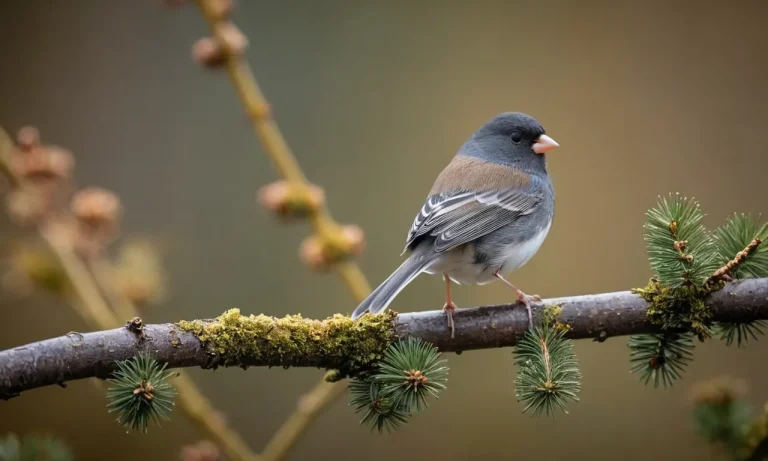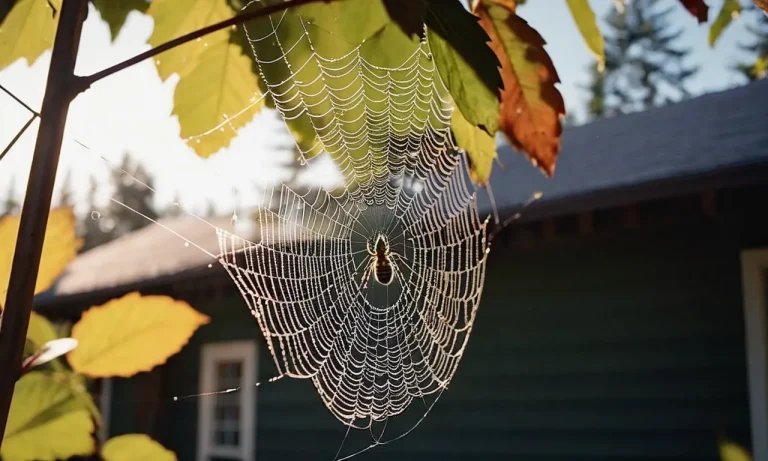Sea beans, also known as drift seeds, are bean-like seeds that fall from their parent plants into the ocean and wash ashore on beaches around the world. If you’ve stumbled upon these smooth, oval-shaped seeds and wondered what they might represent beyond botanical curiosities, you’ve come to the right place.
In short: Sea beans symbolize adventure, fertility, rebirth, protection, and good luck in various spiritual traditions and cultures around the world.
Read on as we explore the fascinating lore and legendry associated with sea beans from Africa to the Americas and beyond. We’ll uncover the plant species they come from, the mystical meanings people have assigned these wandering seeds, as well as sea bean rituals, customs, and spiritual uses across various faiths and folk magic practices.
Identifying Common Sea Bean Varieties and Origins
Sea Bean or Drift Seed? Understanding Key Terminology
Sea beans, also known as drift seeds, are a unique type of seed pod that falls from their tropical host trees and floats vast distances across the ocean before washing ashore. As they drift for months or even years, the hard outer shells protect the seeds inside.
Once deposited on beaches worldwide, the resilient pods have inspired fascination due to their mysterious origins and symbolism. To clarify terminology, sea beans specifically refers to seed pods adapted to oceanic travel, while drift seeds is a more general term for any seed or pod transported by currents.
Mucuna – Velvet Bean
The velvet bean, known by its scientific name Mucuna, earns its moniker from the dense gray hairs covering the seed pods. Native to eastern Asia and tropical regions, Mucuna grows on vines up to 30 feet long.
The plant produces large seed pods up to 6 inches long containing seeds traditionally used in herbal medicine. When the rainforest canopy sheds Mucuna pods into rivers, strong ocean currents can carry them incredible distances.
Mucuna‘s distinctive furry appearance makes it one of the most easily recognized sea beans.
Entada – Sea Heart
The vibrant seeds of the Entada genus produce what are known as sea hearts. These big heart-shaped pods grow up to a foot long and originate from a variety of huge woody vines in Africa, Asia, and the Americas. Sea hearts represent love and connection due to their affectionate shape.
According to legend, drifting sea hearts brought distant soulmates together by magic. While fanciful mythology might not be factual, the ocean certainly transports these beautiful seeds across thousands of miles to distant shores. Seafarers once believed sea hearts granted protection during travels.
Today beachcombers prize them as a treasure from the sea.
Sea Bean Folklore, Mythology, and Spiritual Symbolism
Significance in Africa and the African Diaspora
Sea beans have held deep cultural and spiritual importance in Africa and the African diaspora for centuries. Indigenous groups believed the unique sea-worn beans represented the souls of enslaved ancestors being carried across the ocean, providing solace and connection (SoulofAmerica.com).
According to folk tales, if an escaped slave found a sea bean on the shore after crossing the ocean, it meant their soul had survived the horrors of the Middle Passage.
In the early 20th century during the Great Migration, many African Americans saw sea bean drift seeds as a sign of hope and freedom, spurring their move north for greater opportunity. The buoyant nature and perseverance of sea beans in ocean journeys resonated (UChicago Study).
Some spiritualists in Haiti and Cuba even use sea beans in rituals or prayers today to honor ancestors or for guidance.
Place in Native American Beliefs
Various Native American tribes incorporated sea beans into cultural customs for their perceived supernatural qualities as ocean voyagers. Groups like the Timucua and Calusa often strung sea beans into necklaces thought to provide protection, comfort or symbolic meaning about nature’s cycles or afterlife journeys, as noted on displays in the UPenn Research).
Small offerings are sometimes made upon encountering the auspicious seeds. But in general, sea beans have played a limited folkloric role in mainstream Hinduism compared to Buddhism or other Dharmic faiths.
Rare spiritual uses are often isolated to southern coastal communities in India and parts of Southeast Asia most familiar with the ocean plants through the ages.
Sea Bean Rituals, Traditions, and Magical Uses
Sea Beans for Fertility and Rebirth
Since ancient times, sea beans have been revered as symbols of fertility, birth, and rebirth in many cultures around the world. Their unusual appearance, washing ashore after long journeys across the ocean, has imbued them with an aura of magic and mystery.
In the Cherokee tradition, those hoping to conceive would string sea beans together to make a fertility necklace. The beans were thought to be seeds containing the spark of new life that would be transferred to the wearer 👶.
Some Native American tribes also buried sea beans with their dead as tokens guiding the journey from death back into life.
In island cultures like Hawaii and the Caribbean, sea beans symbolized the goddess of fertility. Finding a sea bean was considered very auspicious if a woman wanted to have a baby. In fact, on some islands, pregnant women wear necklaces of sea beans to celebrate their condition and bring good luck to the unborn child.
Sea Beans as Protective Talismans
With their impervious seed coats, sea beans have an aura of resilience and strength. Many cultures came to view them as lucky charms or protective talismans, especially for seafaring people facing the perilous ocean.
Sailors often carried a sea bean in their pocket when going on voyages, believing it would guard them against storms, misfortune, or shipwrecks 🌊⛵. On some Pacific islands, sea beans stitched into the corners of sails were thought to ward off bad omens for boats.
And in Portugal, small sea bean charms were worn for protection from curses, the evil eye, or bad luck in general 🧿.
Even today, beachcombers like to collect sea beans as symbols of the beauty and mystery of the seas. A bowl filled with these natural ocean gems on the mantel is believed to infuse a home with harmony and positive energy 🌟.
Sea Bean Wish Magic
Perhaps most widespread is the tradition of using sea beans to make wishes. Their hard, egg-like shape encapsulates the promise of possibilities. And having journeyed long distances by sea before arriving ashore, they are the perfect vessels for trustingly carrying wishes over the horizon 🌅.
On tropical islands near where sea beans originate, locals and tourists alike follow rituals for making sea bean wishes. As this tradition goes: Hold a sea bean tightly in both hands, closing your eyes.
Concentrate deeply on your heart’s desire before throwing the sea bean with all your might back into the ocean. If it sails far without sinking, legend says your wish will come true! 🙏
No matter their final use, most cultures agree: if you find a sea bean washed up just for you, consider yourself lucky indeed 😊! Treat it as a special keepsake or gift from the sea.
Finding and Collecting Sea Beans Ethically
Where and When to Look for Sea Beans
The best places to find sea beans are along sandy beaches a day or two after a storm. Keep an eye out for palm-sized seed pods washed up near the high tide line. The most bountiful sea bean hunting grounds are found along the southeastern Atlantic coastlines and Caribbean islands.
September through March offers prime sea bean spotting season when autumn and winter storms kick up plenty of botanical treasures from the sea.
Sea Bean Collection Best Practices
When collecting sea beans found while beachcombing, be sure to only take a few so plenty remain to propagate the next generation. Experts recommend gathering no more than five beans from each plant type per day.
It’s also important to collect beans that have washed fully ashore, leaving partial burials in place to sprout. When foraging sea beans, tread lightly and take care not to trample dune vegetation anchoring the sandy shoreline.
According to the Sea Bean Hunting Guide, the most sustainable way to gather sea beans is to focus efforts on beaches cleaned by recent storms. Seek out collections tossed up freshly by waves instead of picking over the same spot repeatedly.
Photograph in situ discoveries that can’t be taken to remember the joy of the find without damaging the environment.
Purchasing vs. Foraging Considerations
Finding your own batch of sea beans through careful, sustainable foraging makes an excellent eco-friendly hobby. However, some environmental enthusiasts purchase sea beans gathered through wildlife reserve conservation efforts.
Purchased beans directly support habitat restoration projects in places like the Sea Turtle Healing Center.
Ultimately, conscientious consumers prioritize sustainable sourcing whether buying or beachcombing sea beans. Limiting collection to storm offerings without repeated picking prevents depletion of these unique maritime migrants.
Through mindful gathering or charitable purchases, sea bean enthusiasts can secure future propagation without harming sensitive shoreline ecosystems.
Conclusion
If you’re lucky enough to stumble upon sea beans during seaside strolls, consider it a gift brimming with symbolic meaning. These world traveling seeds carry rich cultural lore and legendry thanks to the air of mystery and otherworldliness lent to them by their oceanic journeys.
As we’ve explored, diverse spiritual traditions and folk magic systems ascribe many layers of meaning and mystical significance to sea bean varieties like Mucuna and Entada. Far more than mere flotsam, they variously represent fertility, rebirth, protection, luck and more in the eyes of different global cultures over time.






